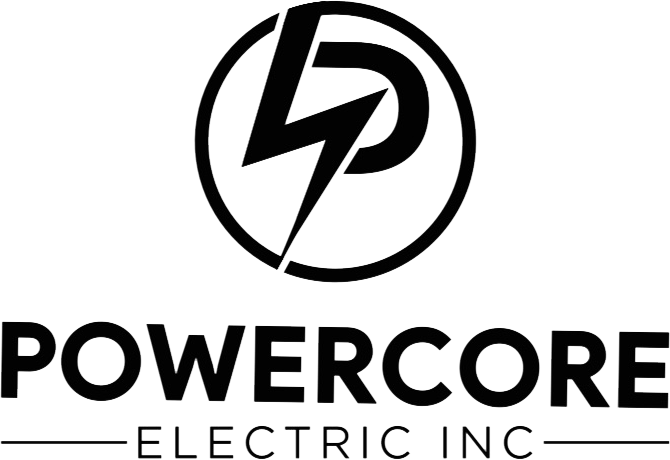Overview
To choose the right battery for your home generator, it’s essential to assess your power needs by calculating the total wattage of the appliances you plan to power and then selecting a battery type that meets those requirements, such as lead-acid, lithium-ion, or AGM batteries. The article emphasizes the importance of understanding both the initial costs and long-term savings associated with each battery type, alongside maintenance considerations, to ensure a reliable and efficient power backup system during outages.
Introduction
Understanding how to choose the right battery for a generator can feel overwhelming, especially with so many options available. Homeowners seeking energy independence and reliability during power outages must first grasp their unique power needs. This journey begins with:
- Calculating the wattage of essential appliances.
- Understanding the nuances of different battery types:
- Lead-acid
- Lithium-ion
By exploring maintenance tips and integrating solar power, homeowners can not only enhance their energy efficiency but also contribute to a sustainable future. With practical insights and budgeting considerations, this guide aims to empower homeowners to make informed choices that ensure their homes remain powered and prepared, no matter what the circumstances may bring.
Understanding Your Power Needs: Key Factors in Battery Selection
To ensure your generator backup system operates effectively, it’s crucial to start by calculating the total wattage of the appliances you intend to power during an outage. Begin by listing each appliance along with its wattage—this could be as simple as checking its label or finding the information online. For example, a heat pump water heater (over 75 gallons) consumes about 111.8 kWh per month, translating to approximately $16.88.
This figure illustrates the power requirements of larger appliances. Summing these wattages gives you a clear picture of your power needs. Pay special attention to peak wattage requirements, particularly for high-consumption appliances like refrigerators and air conditioners, which need more power to start than to operate.
As Solar Addict wisely points out, ‘Do not believe any website that lists power consumption specs for household appliances… they are all over the board.’ For instance, while a refrigerator may consume around 200 watts while running, its starting surge could soar to 800 watts or more. Comprehending how solar panels transform sunlight into electricity can also guide your power storage selections; the output generated by your solar panels should match the wattage requirements of your appliances.
With a solid understanding of your overall power requirements, you can confidently select a battery for home generator that meets or exceeds this capacity, ensuring that your generator will operate smoothly and efficiently during outages. Remember, obtaining precise wattage readings can be tricky, so consider investing in a kilo-o-watt meter to measure actual consumption and avoid unexpected surprises. Furthermore, as emphasized in discussions regarding efficiency in appliance selection, choosing appliances with lower starting surges and investigating thermal storage solutions can significantly reduce overall consumption and lower costs, paving the way for independence in your home.
For power source choices, consider options like lithium-ion cells or lead-acid types for a more economical solution, ensuring they are compatible with the wattage requirements you’ve calculated, particularly focusing on the battery for home generator.
Exploring Battery Types: Which One is Right for Your Generator?
When it comes to selecting the appropriate power source for your generator, you’ll find a few options that stand out, especially when considering efficient energy storage for your home:
- Lead-acid cells are widely regarded as the go-to option for many homeowners and serve as a budget-friendly battery for home generator use, being readily available. They have an estimated lifespan of roughly 12 years in suitable conditions. While maintenance is essential to keep them running efficiently, recent advancements show that the use of additives can significantly improve their cycling performance, addressing capacity decay issues. However, for eco-conscious homeowners, it’s essential to think about the environmental impact of these batteries.
- Lithium-Ion Cells: If you’re seeking a long-term investment, lithium-ion cells are worth considering. They boast a longevity that surpasses lead-acid options, translating to less frequent replacements. Although the initial cost is higher, their lightweight design and reduced maintenance needs can lead to significant savings over time. Moreover, they align with sustainable energy practices, making them a favorable choice for those looking to minimize their ecological footprint. Notable products in this category include the Tesla Powerwall, known for its robust software integration and sleek design, and the LG Chem RESU, which offers excellent performance and compatibility with various inverters. Experts observe that in settings where temperatures surpass 20 °C, the lifespan of power sources can diminish, making it essential to take your local climate into account.
AGM (Absorbent Glass Mat) batteries provide a good balance for homeowners looking for a reliable battery for home generator use, positioned between the affordability of lead-acid and the efficiency of lithium-ion. They provide satisfactory performance, reduced maintenance requirements, and are especially beneficial for use with power sources. Their robust design allows for better cycling performance, making them a practical choice for those who want reliability without breaking the bank.
In choosing the best fit for your energy needs, also consider the broader impact of your choice, such as opting for solar-compatible systems that can enhance grid stability and efficiency. Assess your power source’s specifications and align them with the features of these energy storage types. Additionally, pay attention to warranty considerations, as most warranties for accumulators last at least ten years and cover a certain number of cycles or throughput. Comparing different options and getting multiple quotes will help you find the perfect power partner for your home.
Maintaining Your Generator Battery: Tips for Longevity
Caring for your battery for home generator is essential for guaranteeing it operates effectively when you require it most, particularly in a world progressively dependent on renewable resources. Comprehending how solar panels operate alongside energy storage can greatly improve your energy independence. Here are some essential user manual-style tips to keep your device in tip-top shape:
- Regularly Check Charge Levels: To maintain optimal performance, regularly monitor your device’s charge. For lead-acid cells, check the electrolyte levels at least once a month and top them off with distilled water as needed. This simple step can significantly extend the lifespan of your power source, which, with proper care, can last over 20 years! Properly maintained solar storage units, for instance, can also have a lifespan of 20 years or more, highlighting the importance of diligent maintenance.
- Clean Terminals: Ensure a clean connection by using a mixture of baking soda and water to scrub any corrosion off the terminals. This not only helps maintain a good connection but also maximizes the efficiency of your power source.
- Store Properly: If your generator will be sitting idle for a while, store it in a cool, dry place. Extreme temperatures can negatively affect the health of power storage units, so avoiding these conditions is essential.
- Perform Regular Tests: Utilize a multimeter to regularly check the voltage and ensure everything is functioning correctly. This proactive strategy aids in identifying any possible problems before they intensify.
The storage market is experiencing swift expansion and notable innovation, mainly propelled by the rising worldwide need for power storage solutions. By following these straightforward practices, you can enjoy the advantages of a long-lasting generator and ensure your home is equipped with a battery for home generator to remain ready for any power outages. Moreover, comprehending the distinctions in power cell types—like lithium-ion and lead-acid—along with their specifications, such as density, cycle life, and cost per kilowatt-hour, can offer valuable insight into their applications and maintenance requirements.
This knowledge will assist you in making informed choices about your storage options, enhancing your independence.
Combining Solar Power with Generator Batteries: A Sustainable Approach
Incorporating sunlight power with your power source storage not only encourages sustainability but also improves your autonomy. In fact, Australia installed over 3,000 MW of rooftop photovoltaic panels in 2021, reflecting a significant trend towards renewable energy adoption. Here’s a friendly guide to help you get started:
- Choose Compatible Equipment: Begin by ensuring that your solar panels and battery systems work well with your generator. Fortunately, many modern systems are designed with compatibility in mind, making this step easier than ever.
- Install a Charge Controller: Don’t skip this crucial device! A charge controller maintains the voltage and current from your panels in check, protecting your batteries from overcharging and assisting them in lasting longer. This is crucial for storing electricity generated from the sun, ensuring you have a battery for home generator that provides power independence and protection against outages.
- Utilize Sunlight for Daytime Requirements: Take advantage of sunny days by powering your home with sunlight. This method enables you to conserve your device’s fuel for nighttime or overcast days, decreasing your dependence on conventional power sources and lowering fuel expenses. Additionally, utilizing sunlight can offer significant savings over time!
- Consider Backup Options: Lastly, ensure your power source, such as a battery for home generator, can act as a dependable alternative for your energy system during prolonged overcast periods. This added layer of security ensures that your power needs are always met, giving you peace of mind in your eco-friendly power journey.
As Paul Chiao, sales and marketing director at Encon Solar, observes, “The combination of sunlight power with power systems is crucial for optimizing power efficiency and dependability.” However, it’s important to consider the challenges in the generator market, including the high cost of these devices compared to traditional gas generators and the impact of weather conditions on efficiency. These factors may influence your decision-making process as you embark on this sustainable power journey.
For Long Beach tenants, investigating renewable alternatives can provide access to eco-friendly power solutions that suit your lifestyle! Additionally, by taking advantage of available government programs and tax credits, you can further enhance your savings when investing in solar energy and roofing improvements, ensuring your home is both sustainable and protected.
Cost Considerations: Budgeting for Your Generator Battery
When budgeting for your generator power storage and solar-powered solutions, here are a few essential factors to keep in mind:
- Initial Costs: Start by examining the upfront costs of various power storage types. While lithium-ion cells may require a higher initial investment, they typically offer longer lifespans and lower maintenance needs, making them a wise choice for long-term savings. For instance, the home Tesla charger costs approximately $500 to $700, depending on installation and additional features. Comprehending this cost can assist you in assessing the overall investment in your power setup.
- Long-Term Savings: Consider the potential savings on fuel and maintenance. An efficient power source can significantly reduce operational costs over time, providing peace of mind and extra cash in your pocket. With renewable power becoming increasingly popular, the advantages of photovoltaic panels and EV charging solutions boost your overall savings and sustainability.
- Incentives and Rebates: Don’t overlook local or federal incentives that can ease your initial investment. Programs like the Federal Investment Tax Credit (ITC) offer up to a 30% tax credit on installed systems until 2032. In California, for instance, rebates can reduce installation expenses, making renewable energy solutions more reachable and economical.
- Total Cost of Ownership: Calculate the total cost of ownership, which includes purchase price, maintenance, and replacement expenses during the lifespan of the energy storage unit. This thorough perspective aids in grasping the financial obligation and enables informed choices related to both backup solutions and renewable investments.
Finally, monitor the changing power landscape. As more homeowners turn to solar energy, understanding the market trends and features of top solar batteries—like the Tesla Powerwall or the LG Chem RESU—will guide you in selecting the best energy storage option for your home. For example, the Tesla Powerwall offers a storage capacity of 13.5 kWh, while the LG Chem RESU provides flexibility with various models ranging from 6.5 kWh to 9.8 kWh.
Additionally, consider the broader impact of your choice, such as the incorporation of virtual power plant business models, which can enhance grid stability and efficiency. By considering these factors, you’ll be well-prepared to choose the ideal battery backup solution, ensuring your home remains powered sustainably while maximizing your investment.
Conclusion
Understanding the right battery for a generator is essential for homeowners aiming for energy independence and reliability during outages. By calculating the wattage of essential appliances, selecting the appropriate battery type—whether lead-acid, lithium-ion, or AGM—and maintaining the battery properly, homeowners can ensure their generator operates smoothly when needed most. Each battery type comes with its own set of benefits, from the affordability of lead-acid batteries to the longevity of lithium-ion options, allowing for informed choices that align with both budget and energy needs.
Integrating solar power into the mix not only enhances energy independence but also contributes to a more sustainable lifestyle. Choosing compatible solar systems and utilizing charge controllers can optimize energy use, reducing reliance on traditional power sources. This approach not only saves on fuel costs but also positions homeowners to take advantage of various incentives and rebates, making the transition to solar energy more accessible and financially viable.
Ultimately, the journey to selecting the right generator battery and integrating solar solutions is about empowerment and preparedness. By taking the time to understand power needs, exploring cost considerations, and maintaining energy systems effectively, homeowners can create a resilient energy setup that not only meets their current needs but also supports a sustainable future. With informed choices, every homeowner can confidently navigate the path to reliable and eco-friendly energy solutions.


